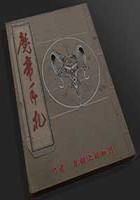After passing unobserved the sixteen ships at Abydos, which had nevertheless been warned by their approaching friends to be on the alert to prevent their sailing out, at dawn they sighted the fleet of Mindarus, which immediately gave chase. All had not time to get away; the greater number however escaped to Imbros and Lemnos, while four of the hindmost were overtaken off Elaeus. One of these was stranded opposite to the temple of Protesilaus and taken with its crew, two others without their crews; the fourth was abandoned on the shore of Imbros and burned by the enemy.
After this the Peloponnesians were joined by the squadron from Abydos, which made up their fleet to a grand total of eighty-six vessels; they spent the day in unsuccessfully besieging Elaeus, and then sailed back to Abydos. Meanwhile the Athenians, deceived by their scouts, and never dreaming of the enemy's fleet getting by undetected, were tranquilly besieging Eresus. As soon as they heard the news they instantly abandoned Eresus, and made with all speed for the Hellespont, and after taking two of the Peloponnesian ships which had been carried out too far into the open sea in the ardour of the pursuit and now fell in their way, the next day dropped anchor at Elaeus, and, bringing back the ships that had taken refuge at Imbros, during five days prepared for the coming engagement.
After this they engaged in the following way. The Athenians formed in column and sailed close alongshore to Sestos; upon perceiving which the Peloponnesians put out from Abydos to meet them. Realizing that a battle was now imminent, both combatants extended their flank; the Athenians along the Chersonese from Idacus to Arrhiani with seventy-six ships; the Peloponnesians from Abydos to Dardanus with eighty-six. The Peloponnesian right wing was occupied by the Syracusans, their left by Mindarus in person with the best sailers in the navy; the Athenian left by Thrasyllus, their right by Thrasybulus, the other commanders being in different parts of the fleet. The Peloponnesians hastened to engage first, and outflanking with their left the Athenian right sought to cut them off, if possible, from sailing out of the straits, and to drive their centre upon the shore, which was not far off. The Athenians perceiving their intention extended their own wing and outsailed them, while their left had by this time passed the point of Cynossema. This, however, obliged them to thin and weaken their centre, especially as they had fewer ships than the enemy, and as the coast round Point Cynossema formed a sharp angle which prevented their seeing what was going on on the other side of it.
The Peloponnesians now attacked their centre and drove ashore the ships of the Athenians, and disembarked to follow up their victory. No help could be given to the centre either by the squadron of Thrasybulus on the right, on account of the number of ships attacking him, or by that of Thrasyllus on the left, from whom the point of Cynossema hid what was going on, and who was also hindered by his Syracusan and other opponents, whose numbers were fully equal to his own. At length, however, the Peloponnesians in the confidence of victory began to scatter in pursuit of the ships of the enemy, and allowed a considerable part of their fleet to get into disorder. On seeing this the squadron of Thrasybulus discontinued their lateral movement and, facing about, attacked and routed the ships opposed to them, and next fell roughly upon the scattered vessels of the victorious Peloponnesian division, and put most of them to flight without a blow. The Syracusans also had by this time given way before the squadron of Thrasyllus, and now openly took to flight upon seeing the flight of their comrades.















